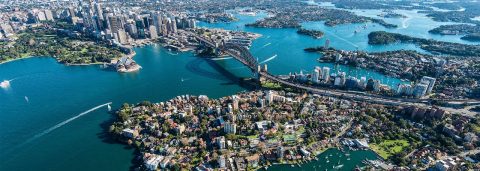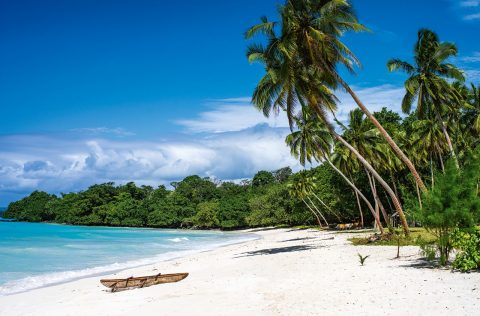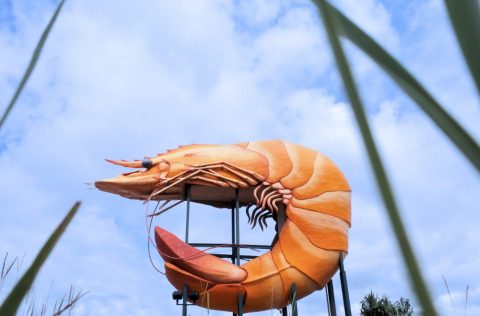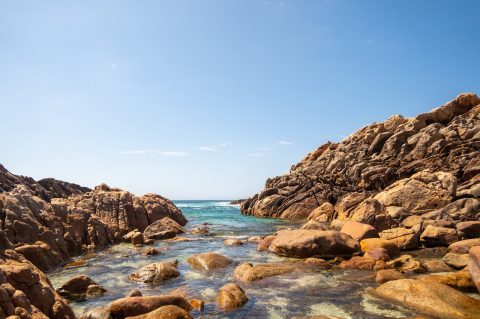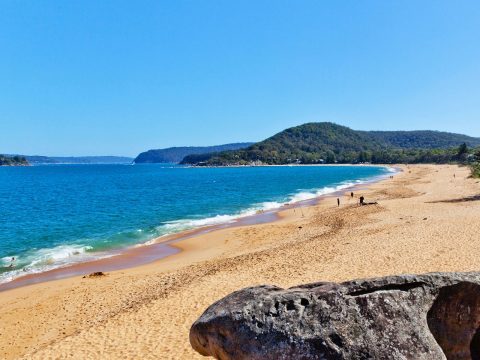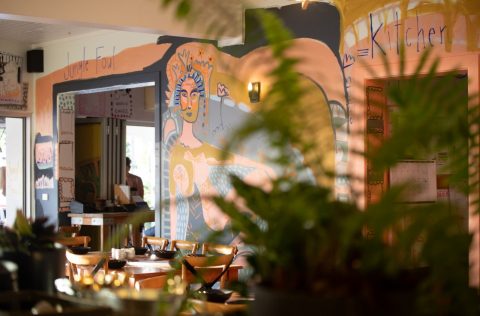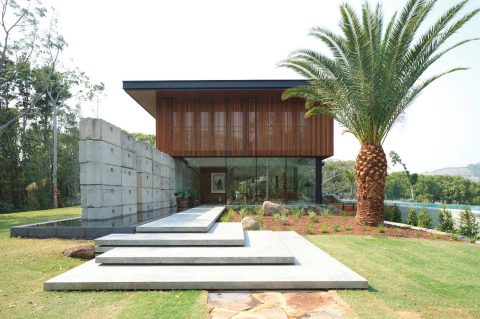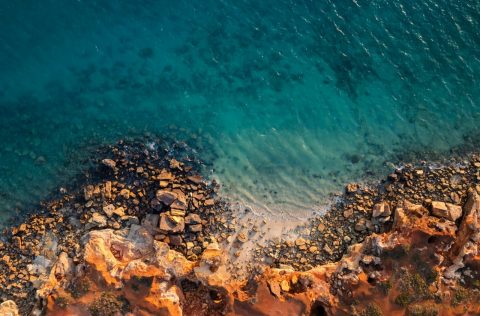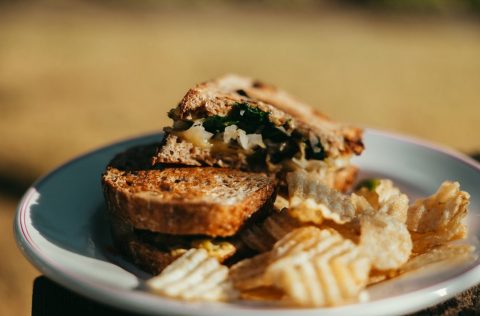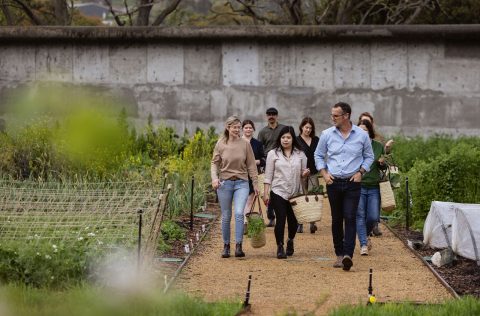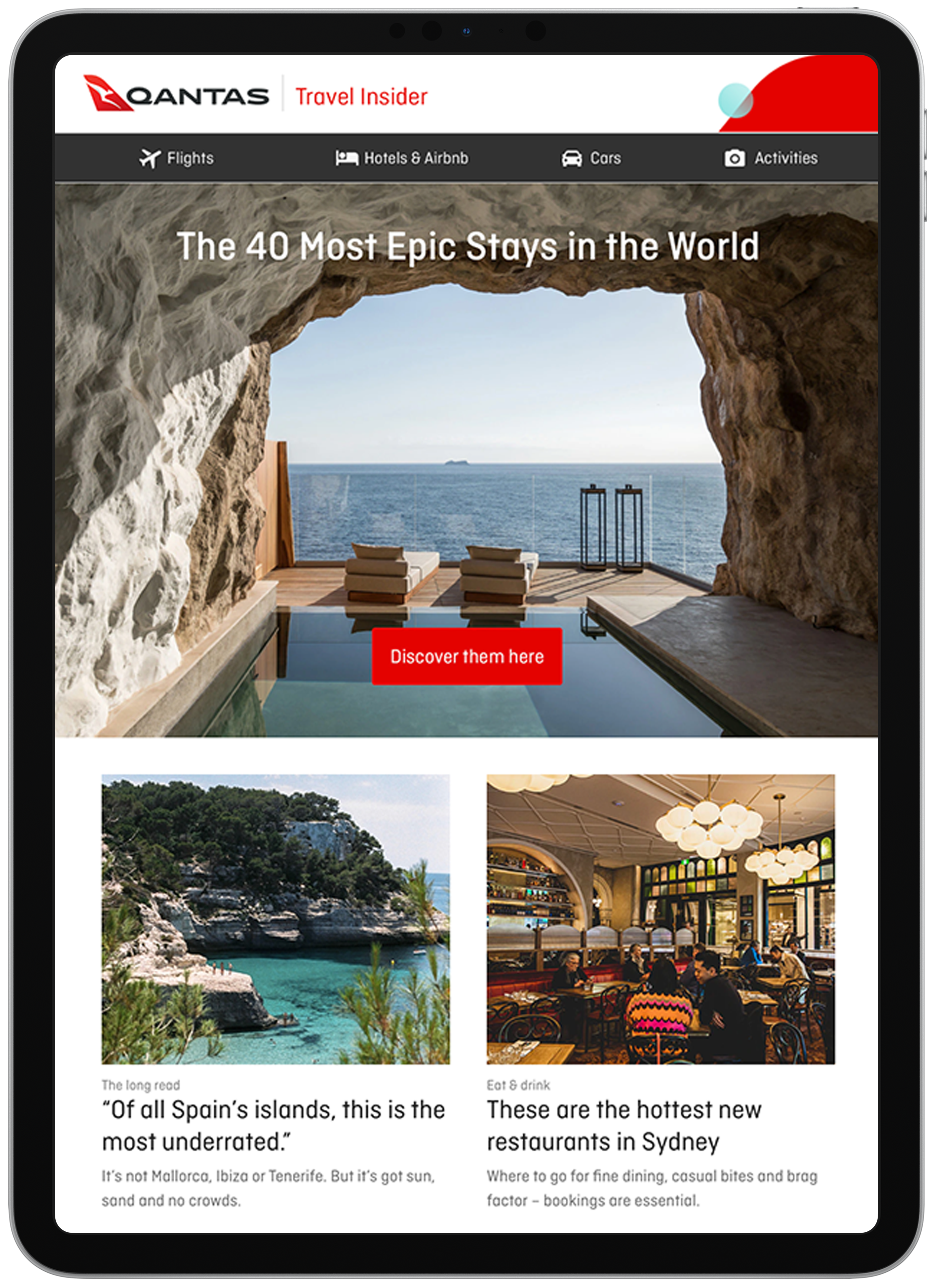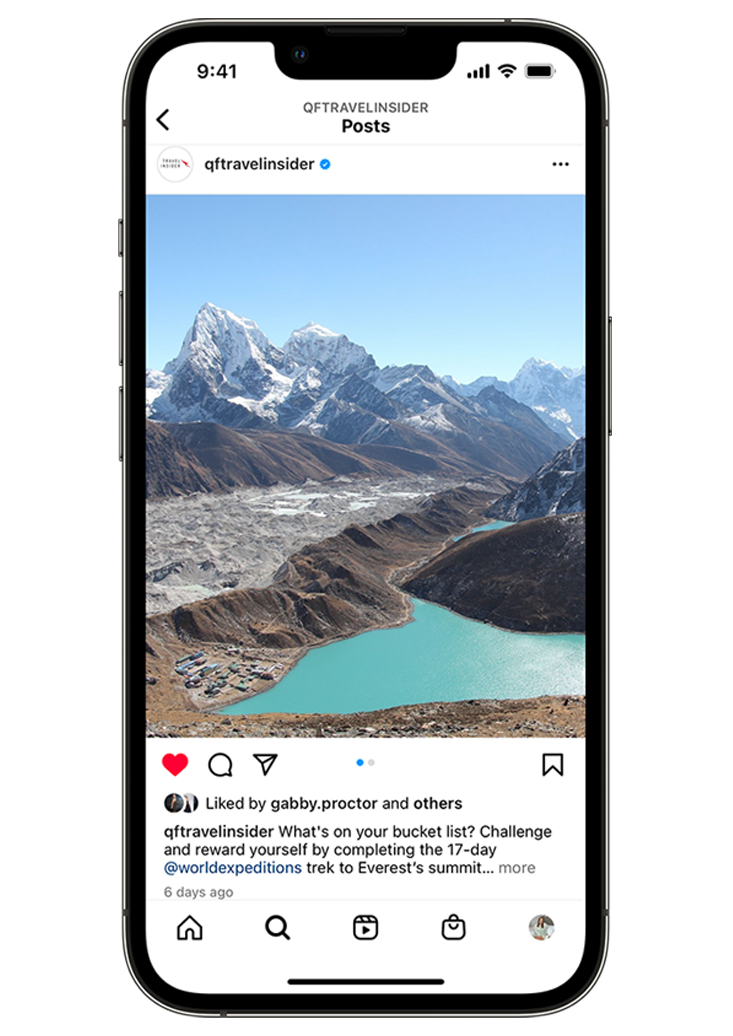20 of Australia’s Best Wild Swimming Spots
For many Australians, a dip is never far away. From bronzed beaches to atmospheric ocean pools, remote waterfalls and inland rivers, we are spoilt for choice when it comes to incredible places to swim. Whether you’re after freshwater or saltwater, our list of special spots will refresh, renew and rejuvenate your swim schedule.
Injidup Natural Spa, WA
1/21The cluster of boulders throughout this Margaret River swimming hole in Leeuwin Naturaliste National Park do more than just add atmosphere. When strong waves crash over them, millions of tiny bubbles form, evoking the feeling of a spa. Be surf-wise: the swell, current and pressure of water on the rocks can disorient even the most capable swimmers.
Yamba Ocean Pool, NSW
2/21Perched at the southern end of Yamba’s Main Beach at the bottom of the pedestrian stairs, this 30-metre-long ocean pool is flushed and refreshed daily by the changing tides, with waves often bringing small fish into the lanes. Within sight of the surf-lifesaving club and recently renovated Pacific Hotel, you can park in the free council parking lot, swim, shower and stroll to the pub for lunch. It’s patrolled from September to Easter, making it a hit with travellers and locals alike.
Wineglass Bay, Tas
3/21Visiting this pristine beach is a full-day affair, requiring a two-hour-one-way walk from the closest car park within the permit-required Freycinet National Park. Begin by taking the Wineglass Bay Lookout trail for exceptional panoramic views across the broader Hazards mountain formations before descending into the lush greenery and then popping out onto the 1.7-kilometre white-sand beach. The calm waters invite lolling: if you float on your back, you might even spot a white-bellied sea eagle circling overhead.
Image credit: Chris Chen
Merewether Ocean Baths, NSW
4/21A testament to the power of a good swim, the stairs leading into one of the two pools that make up Merewether Ocean Baths have been dubbed the “Steps of Knowledge” by locals. Originally built in 1935 and having weathered major storms and an earthquake, the Newcastle site, a couple of hours drive north of Sydney, is the largest of its kind in the Southern Hemisphere. “It’s so liberating, it feels like swimming on a vast, rippling cobalt runway,” says Catherine Brennan, a teacher and London resident who often returns to the area during school holidays and never misses a chance to swim here when she’s in town.
The pools are free and open 24 hours (except for Thursdays during summer when they’re closed for cleaning). The main pool is a 10-lane aquatic behemoth, 50 metres by 100 metres. The smaller wading pool has a sandy bottom that cries out for aqua aerobics or just good old-fashioned splash and play.
The Basin, WA
5/21The clear, light blue water and bright white sand of The Basin on Rottnest Island make the colourful marine life that live there all the more visible. On the shore, a 15-minute walk from the island’s visitor centre, there’s a recently renovated picnic area, public toilets and terraced timber platforms so you can stay all day – in sun, shade and showers.
Image credit: Chris Chen
Bondi Icebergs, NSW
6/21Glowing with good health after their swim, regulars gather on this pool’s icing-white perimeter to banter and reward themselves with a sauna, a smoothie or a cocktail. But there’s more to this iconic spot than laps and lotus-eating. The subject of a feature film and fodder for Instagram feeds everywhere, Bondi Icebergs is the world’s most photographed ocean pool. The image of swimmers traversing aquamarine lanes is shorthand for everything that is desirable about Sydney.
Since 1929, it has been a year-round meeting place for the many tribes of Bondi. Andrew Stephen, a South Bondi local, has been coming here for more than a decade. “There are the failed musicians, aspiring influencers, old Eastern European people and a 92-year-old who continues to swim,” he says. The pool is about community and conviviality, and “the coffee’s as important as the swim”.
Fairy Bower Rockpool, NSW
7/21Between Sydney’s buzzing Manly and Shelly beaches, you’ll pass Fairy Bower Rockpool, built by locals in 1929 and watched over by Helen Leete’s sculptures The Oceanides. You could swim laps – it’s 20-metres in length – but there’s also room to lounge on the sandstone perimeter on the edge of Cabbage Tree Bay Aquatic Reserve. From here, you can spot snorkels and swimming caps bobbing about.
Dalmanyi/Bell Gorge, WA
8/21Surrounded by the Kimberley’s signature red rock, this swimming spot in Wunaamin Miliwundi Ranges Conservation Park fills during the wet season thanks to the water that cascades over rock plateaus and into the bottom of the waterfall. Take the two-kilometre trail above to see it all from a different perspective or simply settle in for a dip at the bottom – keeping an eye on crocodile warnings. It can get busy in summer, so prepare for limited space at the car park adjacent to the gorge, which is located 200 kilometres east of Derby.
Image credit: Chris Chen
Bronte Baths, NSW
9/21Sam Ow never learnt to swim and, before moving to Sydney from Malaysia, was fearful of the water. But now, after a cooling dip at Sydney’s Bronte Baths, he feels “renewed and vital”. Back in 1887, when the baths were built, public swimming wasn’t permitted in daylight hours and was gender-segregated. The baths were conceived as a place where people could enjoy the Pacific safely and modestly, and this tradition continues. Handrails and wide steps give gentle access to the water and the protective embrace of the pool’s seawall allows Sam to enjoy Bronte’s unpredictable turquoise waters, without fear of rips, sharks or dunkings.
While this is an ideal place to loll and luxuriate, it should also be a site of pilgrimage for serious swimmers. The “Australian crawl” (now known as the freestyle stroke) was introduced here in 1901 by a Solomon Islander man named Alick Wickham.
Babinda Boulders, QLD
10/21If you find yourself melting in the tropical North Queensland heat, head for Babinda, an hour’s drive south of Cairns. Flowing from Mount Bartle Frere, the waters of this sacred spot – culturally significant to the Yidinjy people, the area’s Traditional Owners – maintain a delightfully cool temperature even as the mercury rises. Wander along Babinda Creek downstream from the Babinda Boulders picnic area to reach the pools; it’s a 1.3-kilometre return journey along a paved track.
Image credit: Chris Chen
Coalcliff Rock Pool, NSW
11/21Septuagenarian Ray Ziesing (above) is a year-round early-morning ocean swimmer who says “there’s nothing like starting the day in seawater”. As well as being a member of two community swim squads, Ray regards Coalcliff Pool on the South Coast as “among the state’s most glorious swims”. Set in the middle of a rock shelf, it’s a charmer that has attracted swimmers for a century.
Found between Sydney and Wollongong, in what was once a working-class mining community, the area’s dramatic escarpment and churning surf were made famous by D.H. Lawrence’s novel Kangaroo, written when he lived for several months in Thirroul, just south of Coalcliff. Folklore holds that miners smuggled dynamite out of the pits to blast the beginnings of the pool. Fact or myth, the story underlies a truth that the state’s coastal geology is particularly suitable for pool construction. Ray is repeatedly drawn here. “The sheer pleasure of being in its clean, salty water is addictive
Lake Derby, Tas
12/21This north-east Tasmanian mining town is a well-known destination for mountain bikers but this gem is just as easily accessed on foot. Lake Derby (or Briseis Hole, created from a former open-cut mine site) is only accessible via a 15-minute walk along a dirt path. Park at the fire station and then wander across the suspension bridge until you reach the water’s edge. There’s a wood-fired sauna floating against one side of the lake, which you can book – in advance – by the hour.
Image credit: Chris Chen
Bulli Rock Pool, NSW
13/21Like many NSW ocean pools, Bulli Rock Pool, on the South Coast near the city of Wollongong, was a Depression-era public works project. Apart from creating much-needed employment, the construction of ocean pools in the 1930s was a conscious investment in community and national wellbeing at a challenging time in Australia’s history.
This fine example holds pride of place on the golden shoreline of the small town of Bulli. Facing directly to the ocean with sandy beaches left and right, it sits like a pale blue welcome mat to the Pacific. An expansive park and café overlook the pool, which is particularly popular with families. Teenagers holler and whoop as they hang onto the main pool’s railings as waves sweep over them, while littlies splash in a small adjoining pool.
Image credit: Chris Chen
Wylie’s Baths, NSW
14/21The grand old dame of Sydney’s ocean pools, Wylie’s Baths in the eastern suburb of Coogee is a heritage-listed spot with striking views. Cleansing tides fill its depths with colourful fish, sea urchins and the occasional octopus, and the pool’s well-trodden Edwardian boardwalk is a sublime venue for sunbathing, a massage or a snack.
Wylie’s was an early hotspot for Australian competitive swimming and among the greats to take the plunge here were friends and rivals Fanny Durack and Wilhemina (Mina) Wylie, the first women to ever win Olympic gold and silver medals in swimming and arguably the two greatest female swimmers of the early 20th century.
Mina’s father established the pool in 1907 and since then, countless swimmers have followed in her wake, gracefully clocking up lengths. Elspeth Menzies (above) works close by and says, “There’s something meditative and timeless about Wylie’s. It stills me and entices me back time after time.”
Dove Lake, Tas
15/21Nestled within the World Heritage-listed Tasmanian Wilderness Area and surrounded by the commanding crags of Cradle Mountain, this glacially carved lake is a two-hour drive from Launceston. A favourite of hikers, the chilly waters are ringed by a six-kilometre boardwalk that cuts through a rainforest of sassafras, myrtle and King Billy pines. If you’re willing to brave the chilly waters, the easiest place to enter is from the thin strip of rocky beach near the boat shed on the lake’s northern shore.
Pool of Siloam, SA
16/21This hidden saltwater gem – said to be seven-times saltier than the sea – is a sheltered, protected area that makes swimmers extremely buoyant and is said to help relieve skin and bone aches. The swimming hole is located on the Bowman Scenic Drive, an easy one-hour drive north-west of Mount Gambier.
Yarrangobilly Thermal Pool, NSW
17/21This 2.5-metre-deep swimming spot stays a toasty 27 degrees celsius year-round and is fed by a natural spring a kilometre below the surface. Located in Kosciuszko National Park, a 2.5-hour drive from Canberra, this thermal wonder is on a 700-metre-one-way path in the Yarrangobilly pocket of the park (it’s also home to magnificent caves). If the water temperature is a bit too high for your summertime thrills, bookmark a trip for winter and watch tendrils of steam reach upwards as a gentle flurry of snow filters down.
Florence Falls, NT
18/21Although the wet season provides the most spectacular flow, the water is crisp, clear and gentle year-round at Florence Falls, an easy one hour-and-45-minute drive from Darwin in Litchfield National Park. Make the most of your entry fee into Litchfield National Park and explore the nearby Buley Rockhole, which shares the same access road as the falls or head through Shady Creek from the swimming spot up 160 steps.
Millaa Millaa Falls, QLD
19/21Though it’s just one stop on the Atherton Tablelands “Waterfall Circuit” that runs 100 kilometres south of Cairns and includes 10 must-visit swimming spots, Millaa Millaa is a highlight. The 18-metre waterfall spills into a natural swimming hole surrounded by tropical palms and ferns, bright flowers and a chorus of wildlife. Keep your eyes peeled while you’re here – it’s not uncommon to see the blue wings of the Ulysses butterfly flapping overhead (a platypus sighting might prove a little more elusive).
Sorrento Back Beach, Vic
20/21Located south of Sorrento, an hour-and-a-half drive from Melbourne, this beach is fringed by rock pools, reefs and ledges, as well as a surf-lifesaving club and a cafe, so there’s plenty to keep the whole crew entertained. Bluffs and dunes protect the crescent-shaped beach, so your picnic – cooked on the public barbecues alongside the surf club – has a good chance of remaining sand-free. Be cautious of the rips here, especially on weekdays outside the summer and Easter periods when the beach is unpatrolled.
